by Sachi Sri Kantha, June 27, 2014
In my writings to this website, I have hardly mentioned Pon Sivakumaran (1950-1974) so far, in the past 14 years or so. But, that doesn’t mean, he was not in my thoughts. Sivakumaran was born on September 26, 1950. He had an untimely death, gulping cyanide powder at the age of 23, in June 5, 1974, to escape from the torture of Sri Lankan police personnel. Last year, I had recorded the career of T.L.B. Bastianpillai (1941-1978), one of the prime police torturers, who ruled the roost in Jaffna those days. When Sivakumaran died, I was a third year undergraduate student at the University of Colombo. We Tamil students, at the Thurston Road facility, talked in hush tones about his tragic death.
In 1979, I felt that he was great to be recognized in the National Geographic magazine, after his suicidal death. If Eelam Tamil youth received international attention in the mainstream media, in combination with the intolerant attitude of official Sinhalese state sponsored suppression of rights, my choice would go to that still photo of vandalized statue of Pon Sivakumaran in Jaffna, which appeared in the National Geographic magazine of January 1979. The caption for that photo read, “When Pon Sivakumaran, a spokesman for young separatists in Jaffna, the Tamils’ major city, took his life in 1974 to avoid arrest, followers raised his statue atop the rising sun of Tamil nationhood. Then in August 1977 the statue was toppled during sporadic violence that erupted after a national election.” Neither the caption nor the text elaborated who toppled that statue. It was deliberately done by the vandals belonging to the Sri Lankan armed forces. Then, in 1998, to commemorate his death and those of other Eelam Tamil youth who followed his death route, I wrote a 2,000-word essay in English and contributed to the Lancet medical journal’s annual Wakley Essay Prize competition. To my delight, my essay made it to the short list of top six – but, it was not ranked as number 1! More about this, I mention later in this commentary. Now, to Sivakumaran’s suicide.
Many diligent scientists give due respect to one of the four letter words, beginning with alphabet B. They take all precautions to avoid its trap. That word is ‘bias’, which is defined by Daly and Bourke, as ‘any factor or process that tends to produce results or conclusions that differ systematically from the truth.’ So as to avoid this bias, I cite in chronological order, four authors (Rohan Gunaratna, T. Sabaratnam, M.R. Narayan Swamy and Rajan Hoole – who cannot be considered as aficionados of LTTE) – who had mentioned Sivakumaran’s life and death in their books. Then, I offer my rebuttal to one particular author, Rajan Hoole.
Rohan Gunaratna on Sivakumaran (1993)
“On June 4, 1974, when the People’s Bank at Kopay was about to be attacked by TSF youth, the police confronted them. Subsequently, Sivakumaran, a TSF leader, who had previously thrown bombs as well as shot at a police officer, was trapped by the police. Rumour has it that in a desperate attempt to fight his way through, Sivakumaran had grabbed a submachine gun of a policeman, but it had failed to fire. Then he had consumed a cyanide capsule which he had hidden in his person. He became the first ‘martyr’ (Footnote: Prabhakaran, the LTTE leader, claims that he perceived the idea of the cyanide capsule only after the Sivakumaran episode.)”
TSF stands for Tamil Student Federation (Tamil Manavar Peravai), formed in 1970 to agitate against the racist ‘standardisation scheme’ implemented by the then SLFP-led regime, for university entrance exams.
T. Sabaratnam on Sivakumaran (1996)
“The militant group, Tamil New Tigers, made their first attempt to rob the Kopay branch of the state-owned People’s Bank on 4 June 1974. The policemen on guard gave chase and Sivakumaran, the leader, swallowed the cyanide capsule he was wearing. The Tigers wore and wear cyanide capsules so that when in danger of capture they can commit suicide, thus denying the police or security forces of information about their organization. Sivakumaran was the first to die that way.
Sivakumaran’s suicide created an emotional environment in Jaffna. Amirthalingam and [M.] Sivasithamparam went to the Jaffna hospital mortuary to pay their respects to the dead youth leader. [Note by Sachi: In 1974, both Amirthalingam and M. Sivasithamparam were out of parliament, having lost in the May 1970 General Election.] They also attended the massive funeral procession in which Sivakumaran’s body was carried from Jaffna Hospital to Urumpirai, his birthplace. Amirthalingam, usually a very emotional and sensitive person, delivered a stirring funeral oration. He said, ‘Thamby (younger brother) Sivakumaran had made the supreme sacrifice for the sake of the Tamil people. His is a heroic act. Though I differ with him in the violent method he advocated and practiced to achieve the objective of getting for the Tamil people their birthright, I bow my head to him for his commitment and dedication.’
The government viewed Amirthalingam’s participation in the funeral and his oration with disfavor. The police was actually angry with Sivakumaran and Amirthalingam. Some of the intelligence reports sent by Jaffna police, which I had the opportunity to peruse a few years later, reveal the intensity of that anger. The reports stated that Sivakumaran had thrown a bomb at Jaffna ASP, S.K. Chandrasekera earlier and charged Amirthalingam as ‘the man behind the murderers’. A report dated 15 July 1974 contained this paragraph: ‘Mr. Amirthalingam, President of the Federal Party, is an extremist. He is always associating with the murderous group, Tamil New Tigers. He is the brain behind their activities. We are watching him. We are collecting evidence against him. We have a record of his speech at Sivakumaran’s funeral. In that he called that criminal a hero.’ ”
Sabaratnam did not mention, how he managed to read such Police Intelligence report, and the source which leaked such a report.
Narayan Swamy on Sivakumaran (1996)
“Jaffna witnessed its first case of death by cyanide poisoning the next year. Sivakumaran had been lying low for a while, but took an active interest in the 1974 International Tamil Conference in Jaffna. He had been influenced by his parents’ pro-Federal Party views. He studied at the Urumpirai Hindu College – which was to give several recruits to the Eelam campaign – up to the Advanced Level, majoring in chemistry. [Note by Sachi: For Advanced Level, all students in science disciplines studied four subjects, including chemistry. So, ‘majoring in chemistry’ is bad choice of phrase here.] He later joined a Polytechnic at Kokkuvil, but dropped out after two months. He is the only one among the Tamils of that era who is remembered fondly even today by everyone.
‘He was a very sensitive person. He believed that despite the need for militancy, the Federal Party was important and often compared Chelvanayakam with Mahatma Gandhi and the boys with Subash (Chandra) Bose’ said Somasundaram ‘Mavai’ Senadirajah, a leading light of those years and later an MP. ‘He was a restless character, added Rudhramoorthy Cheran, a former Jaffna University student who had moved closely with Sivakumaran in 1973-74. ‘He would discuss all night, emphasizing the need for an armed struggle.’
Since breaking off from Thangadurai, Sivakumaran had set up his group, which came to be known as the Sivakumaran group. The 1972 and 1973 mass arrests had slowed down his pace. His contemporaries say he was a shattered man after the 1974 Tamil Conference fiasco; he had worked hard for its success, and it pained him that nine people died for no fault of theirs. Since then he had passionately advocated vengeance – against Duraiappah, the mayor, and a Sinhalese police officer he held responsible for the deaths.
On June 5, 1974, Sivakumaran was trapped by the police while attempting a bank robbery in Jaffna’s Kopai town. He was 17 years of age [Note by Sachi: Wrong! He was 24 at the time of his death.] and knowing about police torture if he were caught, he used to carry a cyanide pill. On that day, he swallowed it without so much as an afterthought and died almost instantly. There was born Sri Lanka’s cyanide culture.
Hundreds thronged Sivakumaran’s funeral. All shops in Jaffna downed their shutters in mourning and hundreds of pamphlets were distributed in the town and its outskirts, eulogizing the martyr as Eelam’s Bhagat Singh. The funeral, several TYL members slashed their fingers and with the blood that dripped placed dots on their foreheads, pledging collectively to continue the fight for an independent state. Some youths attacked moderate Tamil politicians with slippers when they began speaking about Sivakumaran. Tamils later put up a bronze statue outside Jaffna in the memory of the young man – it showed a defiant youth, his clinched fist outstretched and dangling a broken chain.”
TYL stands for Tamil Youth League [Tamil Ilaignar Peravai], a grouping formed under the patronage of Tamil United Front or its dominant component Federal Party. Swamy’s cavalier description of a ‘cyanide pill’ is a misnomer. Chemically speaking, there was no ‘cyanide pill’ as such. A potent quantity of Potassium Cyanide powder was filled in a glass vial and this vial was carried as a talisman. Recently, I checked with Dr. Rudhramoorthy Cheran (currently, an associate professor at the University of Windsor, Canada) via email about him being quoted by Narayan Swamy, and he did confirm it to be true. Cheran also let me know that Sivakumaran functioned as the leader of all volunteers, who worked for the success of the 4th International Tamil Conference-Seminar held in Jaffna during January 1974.
Rajan Hoole on Sivakumaran (2001)
I provide Rajan Hoole’s treatment of Sivakumaran here, for two reasons. First, in his account, he had critiqued my view (without mentioning my name, though it was distinctly visible in the short commentary; I provide a scan of this material nearby), which appeared in the Hot Spring (London) magazine in July 1999. Secondly, Hoole compared the suicide of Sivakumaran and that of the suicide of LTTE cadres, and differed from my expressed view that Sivakumaran’s suicide was ‘good’ but the suicides of LTTE’s Black Tigers were bad for the society.
To rebut the distorted view presented by Hoole, first I quote extensively six paragraphs from his book.
“…We begin with the romanticisation of suicide from the July 1999 issue of the pro-LTTE expatriate journal Hot Spring. It said in an introductory note on Socrates, “He taught people to think about good and evil, in order to improve their own behavior. Some people did not approve of his ideas and he was forced to commit suicide.” [Italics as in the original. Note by Sachi: This comment was written by S. Sivanayagam, the editor of Hot Spring.] An attempt is then made to link Socrates, Ponnuthurai Sivakumaran and today’s Tigers: “Since 1974 [when Sivakumaran committed suicide by taking cyanide to evade capture], hundreds of young Tamil heroes and heroines have demonstrated their mental courage by standing up for their beliefs and following the footsteps of Socrates and Sivakumaran.” [Italics as in the original. Note by Sachi: As one could glance from the scanned copy, this comment was written by me, as an introduction to my short commentary.]
This description of the modern Tigers is important for the Tamil elite in order salve their consciences. Surely, when the young commit suicide for a cause that is unashamedly totalitarian and has no pretensions of offering anything tangibly human, we should be instantly driven to condemn those responsible for inflicting this outrage.
Let us begin with Sivakumaran. His death took place a year before the first Tiger organization (Tamil New Tigers) was formed. Sivakumaran is described by those who knew him as having been a good human being and a good student at school. He was a militant, and though from the high caste, he fought against caste. He campaigned against the slaughter of goats at the Urumpirai Vairavar Temple. He was poetically talented and published a handwritten newspaper.
It would be a grave distortion to compare Sivakumaran with Prabhakaran’s Tigers. Sivakumaran was an active reformer, trying to politicize the people and build a mass base. The Tigers were quite the opposite. Prabhakaran did not believe in politicizing the people – he had a contempt for them. His model for the movement was drawn from the mafia cult and secret societies of the smuggling fraternity in Valvettiturai – his hometown. Sivakumaran valued freedom, lived a free man, died of his own free will and wanted his people to value freedom. Prabhakaran has no place for freedom or self-criticism within the movement. Rules were there to be obeyed by his cadre and the cost of breach was death. Sivakumaran was a popular youth in his area who inspired others to selfless ideals. Prabhakaran was ambitious in a secretive and withdrawn manner, and his politics brought out the lowest in people.
Sivakumaran died aged 24, at the height of youthful idealism, and had he lived, society may have corrupted him. While young Prabhakaran cannot be said to have been devoid of ideals, the manner in which he and his society interacted with each other changed both for the worse. While the LTTE professes some token reforms to impress the naïve, utility alone governs its social ethics. If two neighbours were simply jealous, by creating conditions where they could hope for gain by informing on one another, the LTTE made them homicidally jealous. If one could satisfy one’s greed through acquiring someone else’s property by informing on him, one was encouraged to do so. If one could get a pass from the LTTE to get out of its miserable regime and join a cousin in France for the price of hosting a bomber in Colombo who may destroy dozens of other lives, one was pushed into it. In effect, the politics of the LTTE found freedom in its nobler forms completely abhorrent and thus its social influence became loathsome.
It was this tortured society that produced the ‘Black Tiger’ phenomenon. It would be wrong to give uniform reasons why young men and women are willing to blow themselves up for a cause that promises only misery to the people. Occasionally there are some intelligent persons going into it. But they are mostly persons broken internally and in need of release. Many distressed youths who were disillusioned with their organization, bit the cyanide capsule when a pretext arose, and were conveniently commemorated as martyrs…”
I desperately refrain rebutting the academic trash spewed on Prabhakaran and the LTTE by a third degree mathematician pretending to be a fourth degree psychiatrist, because it deviates from the main theme (i.e., Pon Sivakumaran) of this commentary. Rajan Hoole seems naive to the freedom movements around the globe (PLO, Chechen rebels, Uighur rebels – to name a few. All these belong to Islamic religion, which employ suicide bombers) against powerful state oppressors and state-sponsored terrorism. Does he mean to interpret that all these non-Tamil, non-Hindu/Christian rebel groups draw their ideology from the model of mafia cult?
In their tracts like ‘The Broken Palmyra’, Hoole and his ilk delighted themselves with pleasure that the Eelam Tamils led by LTTE exploited ‘funeral culture’ or ‘corpse politics’. I would say this. Dr. Rajani Thiranagama and Dr. Rajan Hoole, being Christians, were too dumb to comprehend that the Christian religion they belonged to was born from such ‘corpse politics’, celebrating the resurrection of the corpse of Lord Christ! This is not to be understood as an attack on Christian religion per se. What I criticize here, was the ignorance and pomposity of academics like Hoole, who had failed to study the origin and history of Christians during the first three centuries of Anno Domini.
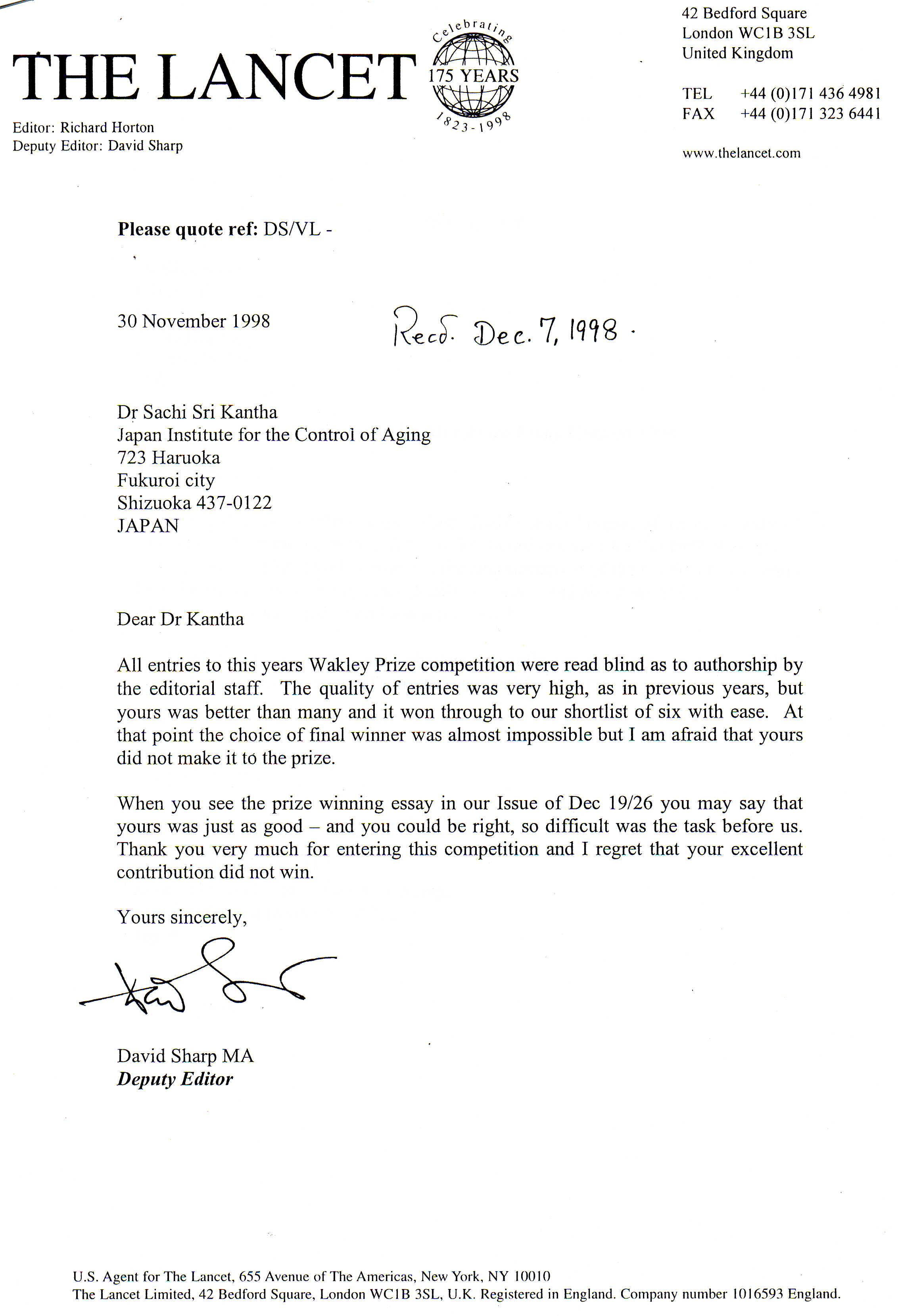 Now, I provide the background to my 1999 short commentary in the Hot Spring, which attracted the attention of Dr. Hoole. In late 1998, I decided to become a contestant in the annual Wakley Essay Prize sponsored by the Lancet medical journal. One of the conditions was that the chosen topic of essay should be in a clinical theme, relevant to international audience. I chose the theme of suicide, and titled it attractively ‘Suicide: A Socratic Revenge’. Luckily, it was short-listed within top six of the entries received for that year. I provide a scan of the letter received from David Sharp, the Deputy Editor of Lancet, dated November 30, 1998. Though I was delighted to hear that the selection committee recognized my writing talent, I was disappointed that it couldn’t make the 1st place. Then, in 1999, I offered a shortened version of it to S. Sivanayagam to commemorate the 25th death anniversary of Pon Sivakumaran.
Now, I provide the background to my 1999 short commentary in the Hot Spring, which attracted the attention of Dr. Hoole. In late 1998, I decided to become a contestant in the annual Wakley Essay Prize sponsored by the Lancet medical journal. One of the conditions was that the chosen topic of essay should be in a clinical theme, relevant to international audience. I chose the theme of suicide, and titled it attractively ‘Suicide: A Socratic Revenge’. Luckily, it was short-listed within top six of the entries received for that year. I provide a scan of the letter received from David Sharp, the Deputy Editor of Lancet, dated November 30, 1998. Though I was delighted to hear that the selection committee recognized my writing talent, I was disappointed that it couldn’t make the 1st place. Then, in 1999, I offered a shortened version of it to S. Sivanayagam to commemorate the 25th death anniversary of Pon Sivakumaran.
Subsequently, the complete text of my essay was accepted for publication in the March 2000 issue of Ceylon Medical Journal, by Prof. Colvin Goonaratna (a Co-Editor of the journal). In our correspondence, he had solicited any of my ‘good’ manuscripts for publication. I guess, the simple fact that this ‘suicide’ essay of mine was placed within the top six of the Wakley Essay Prize contest in 1998, made it easier for him to accept it without any revision! In fact, it appeared in print before Rajan Hoole’s book.
Despite Hoole’s derisive comments on the use of cyanide powder by LTTE’s cadres, I still hold that he had simply misunderstood the suicide ideals of Socrates, early Christian martyrs, and distorted the positions taken by Sivakumaran and the LTTE leadership. Socrates chose hemlock poison. Sivakumaran and the LTTE’s martyrs chose cyanide powder. Here is a quote from Don Nardo’s book ‘The Trial of Socrates’.
“This moral choice Socrates exemplified later influenced a number of religious faiths, including Christianity. The idea of standing on personal conscience rather than following socially accepted but unjust laws became one of Christianity’s principal tenets. Over the years many Christians martyred themselves for their beliefs, as Socrates did.” (emphasis mine)
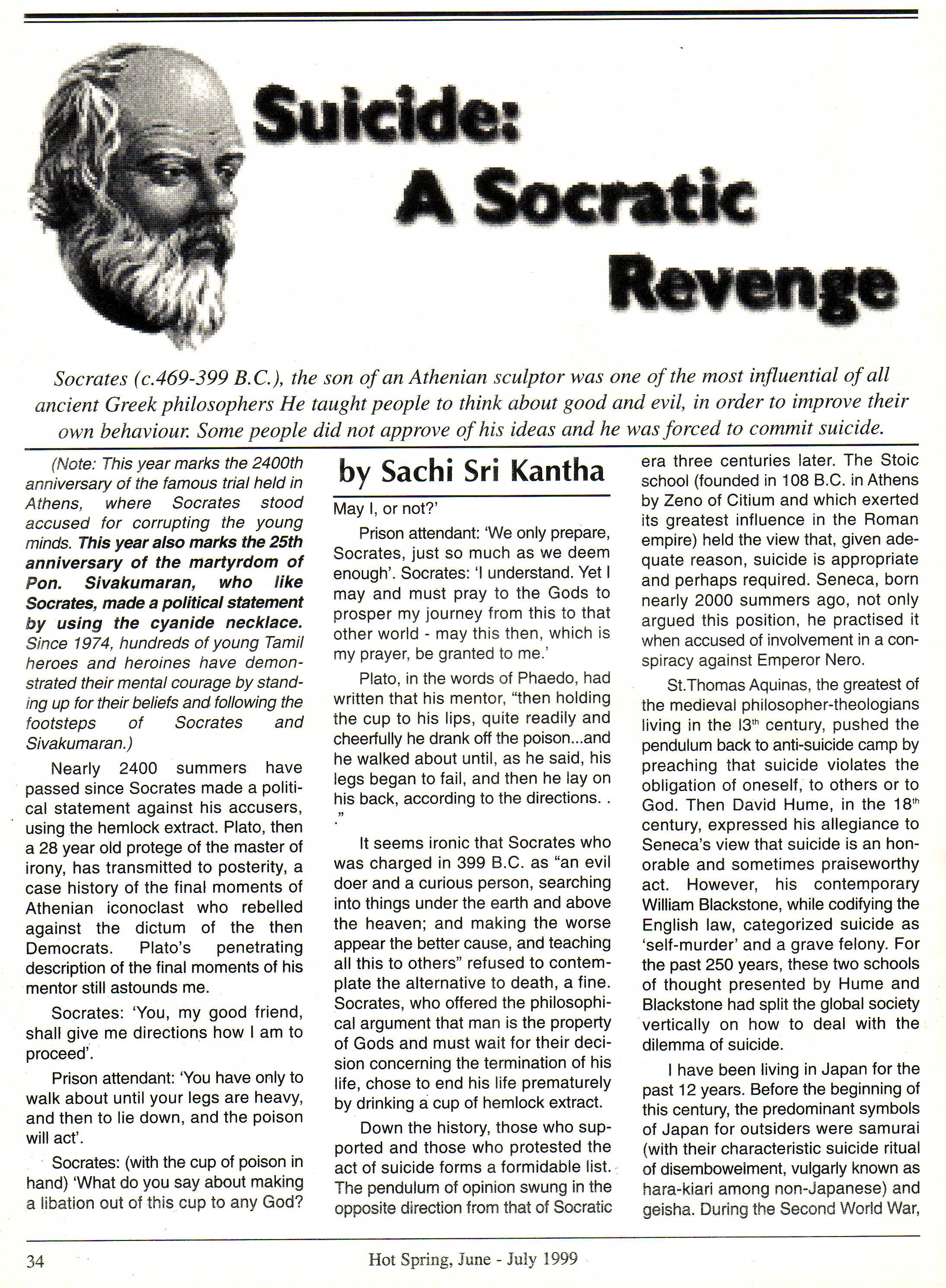
Cited Sources
Leslie E. Daly and Geoffrey J. Bourke: Interpretation and Uses of Medical Statistics, Blackwell Science, Oxford, 5th ed., 2000, p. 381.
Rohan Gunaratna: Indian Intervention in Sri Lanka – The Role of India’s Intelligence Agencies, South Asian Network on Conflict Research, Colombo, 1993, p. 68.
Rajan Hoole: Sri Lanka: The Arrogance of Power – Myths, Decadence & Murder, University Teachers for Human Rights (Jaffna), Colombo, 2001, pp. 419-420.
Robert Paul Jordan: Sri Lanka – Time of Testing for an Ancient Land. National Geographic, Jan. 1979, 155(1): p. 138 (photo by Ragubir Singh).
M.R. Narayan Swamy: Tigers of Lanka – From Boys to Guerrillas, Konark Publishers, Delhi, 1996, 2nd ed., pp. 28-29.
Don Nardo: The Trial of Socrates, Lucent Books, San Diego, 1997, p. 85.
Murder of a Moderate A political biography of A Amirthalingam
T. Sabaratnam: The Murder of a Moderate – Political Biography of Appapillai Amirthalingam, Nivetha Publishers, Dehiwela, 1996, pp. 233-234.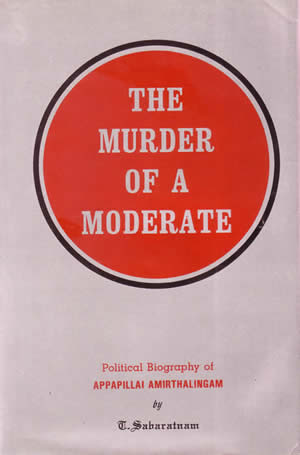
Sachi Sri Kantha: Suicide: A Socratic Revenge. Hot Spring (London), June-July 1999, pp. 34-35.
Sachi Sri Kantha: Suicide: A Socratic Revenge. Ceylon Medical Journal, March 2000; 45(1): 25-28.
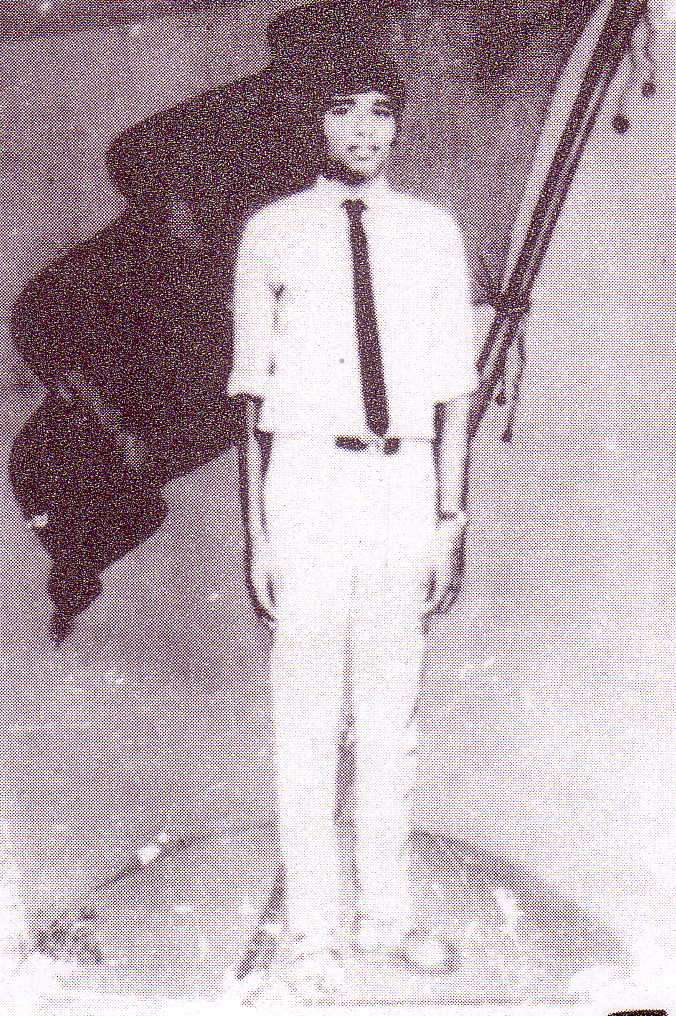
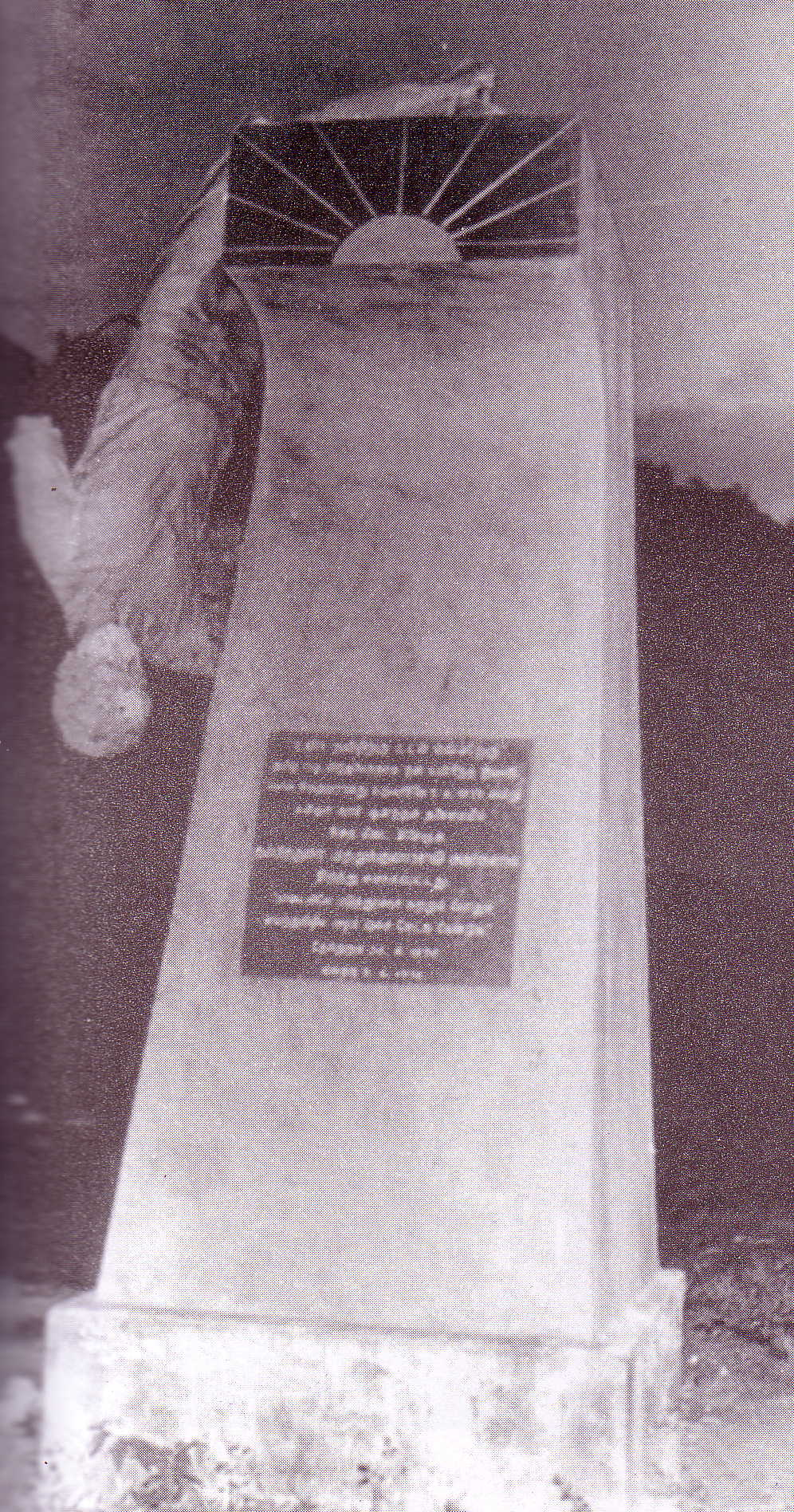
SivaKumar’s demise was an inspiration to the young. To the politically minded that story was an attractive cannon fodder while their own sons (daughters) either abroad or safely in best colleges studying to be the top of the palmyrah tree! History came full circle when the unused cynaide kuppi were strewn all over as preparation to safe exit or surrender. Sachi speaks of disembowelment. He, of course, knows the following lines:
<>
Kuppi lost its force and credibility in this particular warfare in the Eelam soil. There are multi-faceted reasons for it. தன்மானம் ஒன்று தான் அடிப்படை.
The following line…. மயிர் நீப வாழா கவரி மான் அன்னார்; உயிர் நீப்பர் மானம் வரின்
SingaraVelan, thanks for your thoughts.
It is an interesting observation that Pon Sivakumaran has tried to persuade people against animal sacrifice to Vairavar – a ferocious side of The Lord Siva. Animal sacrifice including human sacrifice is not novel to ancient religions. It was practiced in the Temple of Jerusalem. Jesus is seen as sacrifice – an atonement for the sin if the world. Abraham – the Father of Judaism, Islam, Christianity was willing to sacrifice his son Isaac, as burnt-offering to God. So the talk of ‘funeral culture’ is an annoying avoidance of a faith that is engrossed on a tortured young Jewish human/divine being.
வடிவான வடிவேலா
திரு வேல் ஓங்கி
கதிர்காமம் அம்மான் பார்க்க
வருவாயோ!
பாலும் பலகாரமும்
பினாட்டும் தேங்காயும்
முருக்கும் தருவேன்
காதல் திருக்கன்…என் முருகா!
புருவம் நடுவில்
நடனம் ஆடிவரும்
மயில் வாகனனே
சுடலை பொடி சாத்திய
சபாபதி சித்தனே…
ஓம்! சும்மா இரு!
all gone: what we had today is a road without any access towards Tamileelam!
tears from my eyes!
கடலில் முத்து குழித்தவனுக்கு
கண்ணீர் என்ன! உப்புத் தண்ணீர் என்ன?